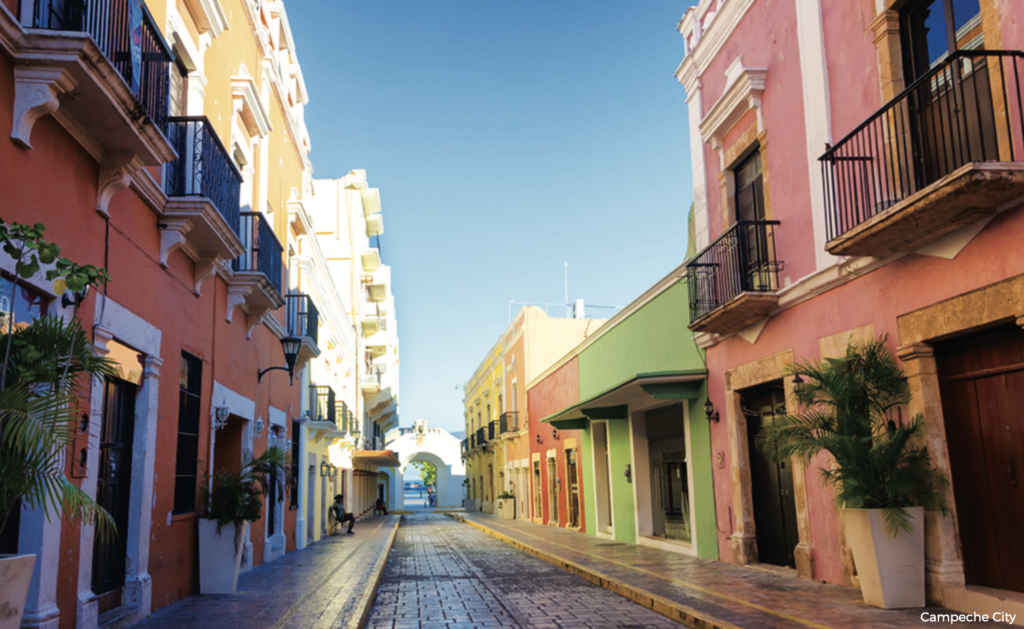MEXICO: EXPLORING UNCHARTERED YUCATÁN
Campeche, the region west of the Yucatán peninsula, is rich in patrimony and far from the typical sightseeing tours. Among the many gems in the region, there are two exceptional, must-see spots.
Campeche, the region’s capital city and namesake, has been a UNESCO World Heritage Site since 1999. It was one of the peninsula’s largest exporting ports to Spain, making it a haven for piracy in the Caribbean. Visitors can still see the city’s fortifications, along with many forts and bastions, some of which have been restored in museums, such as San Miguel and San José el Alto. Campeche’s colonial architecture, blended with a Baroque and Renaissance feel, is ideal for a picturesque stroll along the cobblestone streets of the old city. Every night, a «mapping» display showing the history of Mexico is projected onto
El Palacio Cultural Center’s facade.

At the heart of the world’s third-largest biosphere reserve, five hours from the city of Campeche, Calakmul has been a UNESCO World Heritage Site since 2002. Although not as famous as its rivals Uxmal (Mexico) and Tikal (Guatemala) because of its isolation, Calakmul was nevertheless one of the most powerful cities of the Mayan Empire. The site covers more than 30 km2 and is home to the remains of some 6,700 constructions and stelae, or sculpted stones. The remarkable pyramid protecting the tomb of King Jaguar Paw of the Snake Dynasty would have taken more than 300 years to build, the longest known construction in the Mayan civilization to date. At the top of the temples, there’s a striking panorama: the enchanting
serenity of endless jungle, embellished by the occasional sounds of monkeys, birds and other animals living in this wild habitat.

